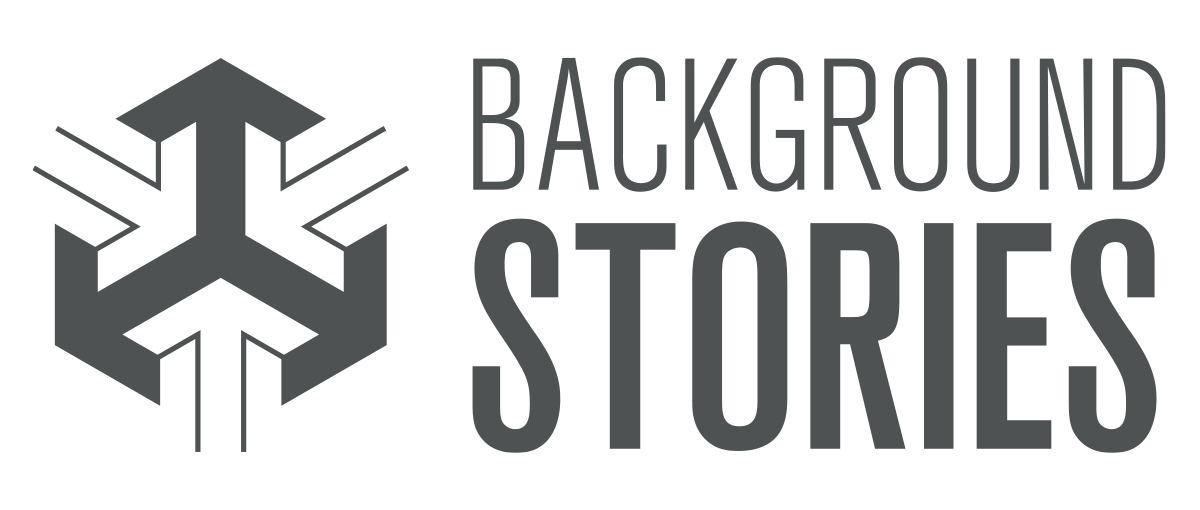Pensacola and Perdido Bays Estuary Program (PPBEP)
Mapping the Path to Watershed Improvement
ENGAGING STAKEHOLDERS, INSPIRING ACTION
Design, data visualization, & layout of a report and companion website
We designed PPBEP’s Comprehensive Conservation & Management Plan to communicate their strategic vision to a broad range of stakeholders. The document serves as a guide for research, restoration, education, and outreach that enhances the community's quality of life and economic prosperity — all while improving the health and sustainability of the Pensacola & Perdido Bay watersheds.
Color-coding and icons used throughout help viewers easily navigate the document, promoting engagement across all sections of this 200+ page report. Steps were followed to ensure the document met accessibility compliance guidelines.
We also created a companion website, State of the Bays, for PPBEP to update their partners on the status and trends of their estuaries. The interactive website uses the same colors, icons, and illustration style as the report to maintain a consistent visual language.
Our work includes: INFOGRAPHICS, DATAVIS, ILLUSTRATION, PUBLICATION DESIGN, ACCESSIBILITY DESIGN, WEB DESIGN
PROJECT IMPACT
This 200+ page publication illustrates how the community can support the health & sustainability of the Pensacola & Perdido Bay Watersheds. The interactive website is a resource for community members and decision makers to stay up to date on the status of PPBEP's focus areas.
Our Partner:

This Organization's Focus:



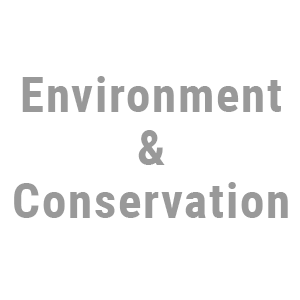



Maps and Infographics throughout the report educate and encourage action.

▲
This infographic highlights the particular ecosystem stressors that the estuaries face. Customized icons quickly inform the viewer of the main stressors, drawing them into the text overview for each stressor.
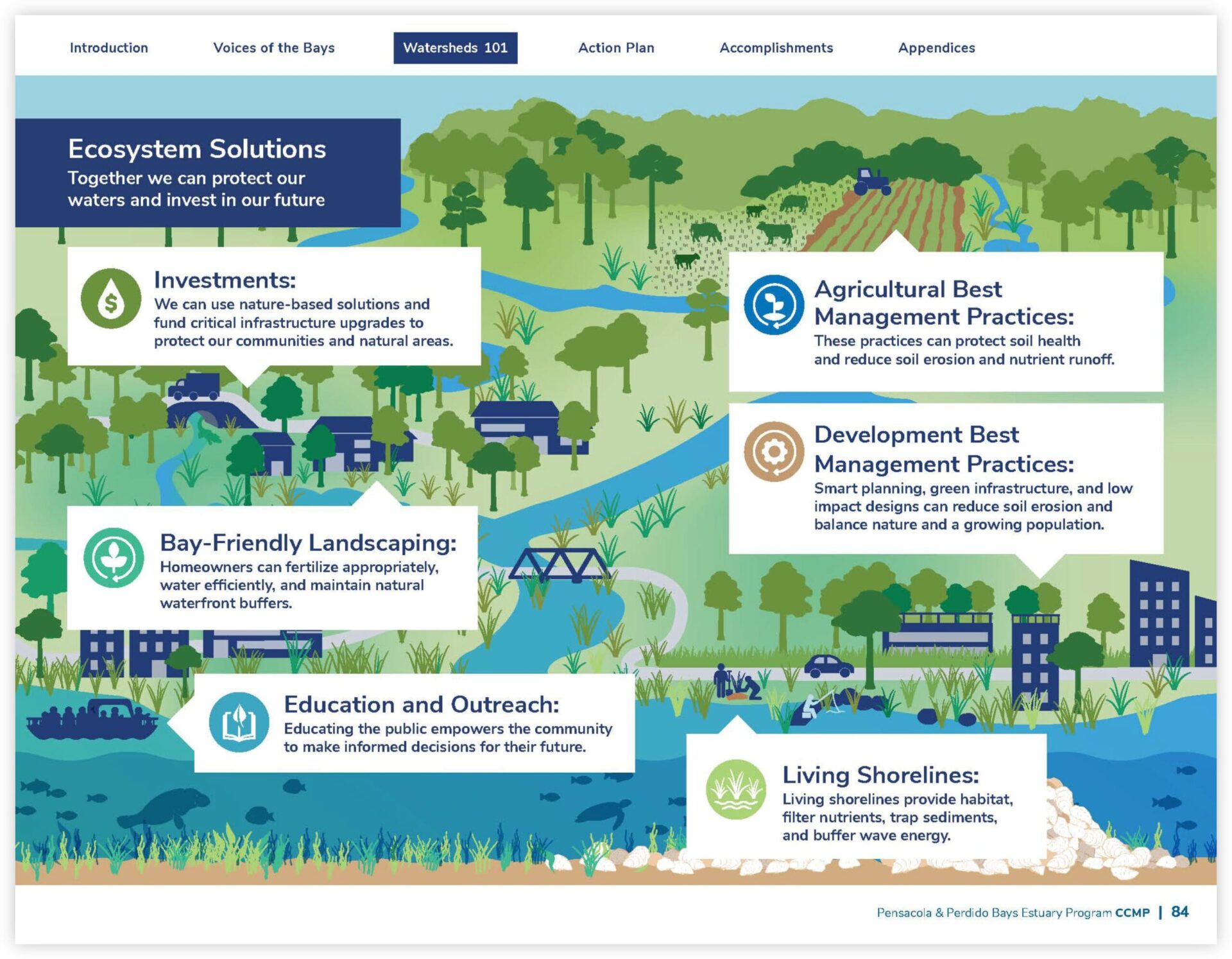
▲
A counter-part to the infographic on the left, this graphic visualizes a healthy estuary and highlights how to combat ecosystem stressors.
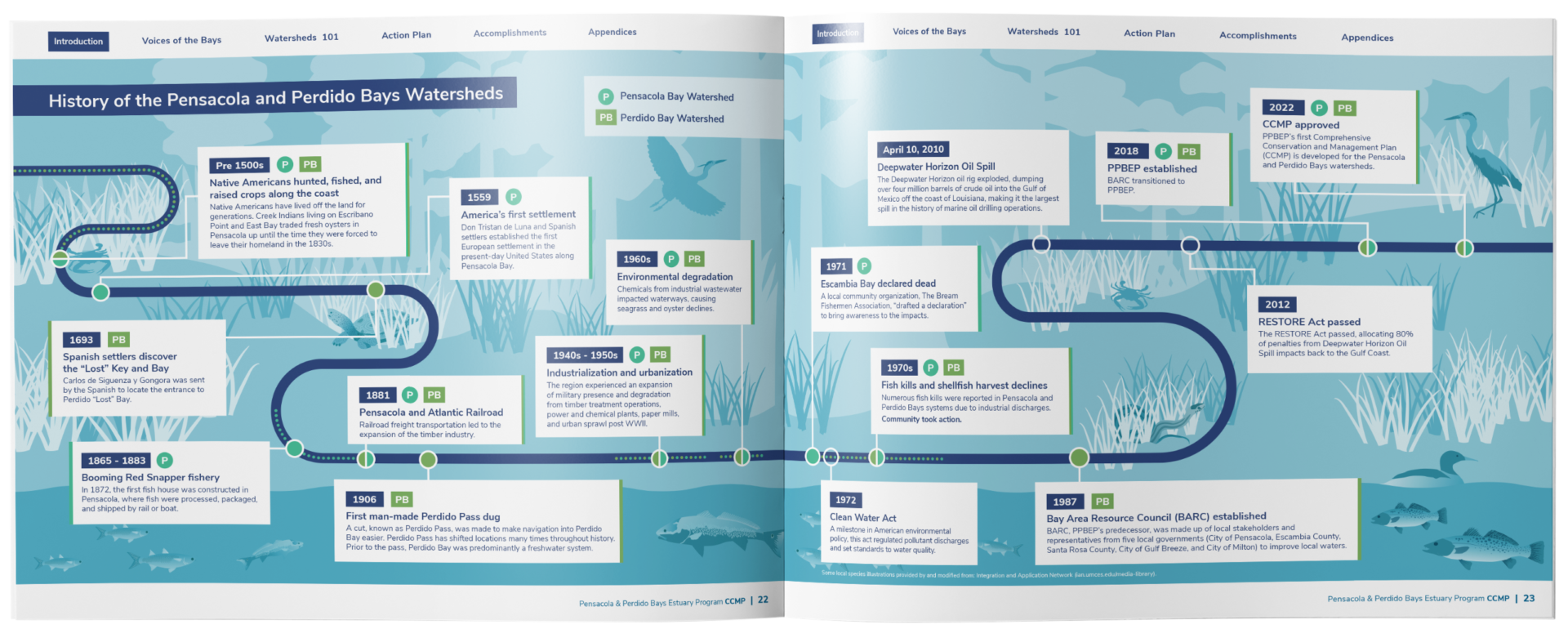
▲
This timeline uses color & shape to help the viewer identify which events correspond to each estuary. Custom, rich illustrations provide visual interest and put the information into context — helping the reader connect emotionally with the flora and fauna native to the estuaries.
Icons and color-coding act as visual language to help the reader navigate the 200+ page document and companion website.
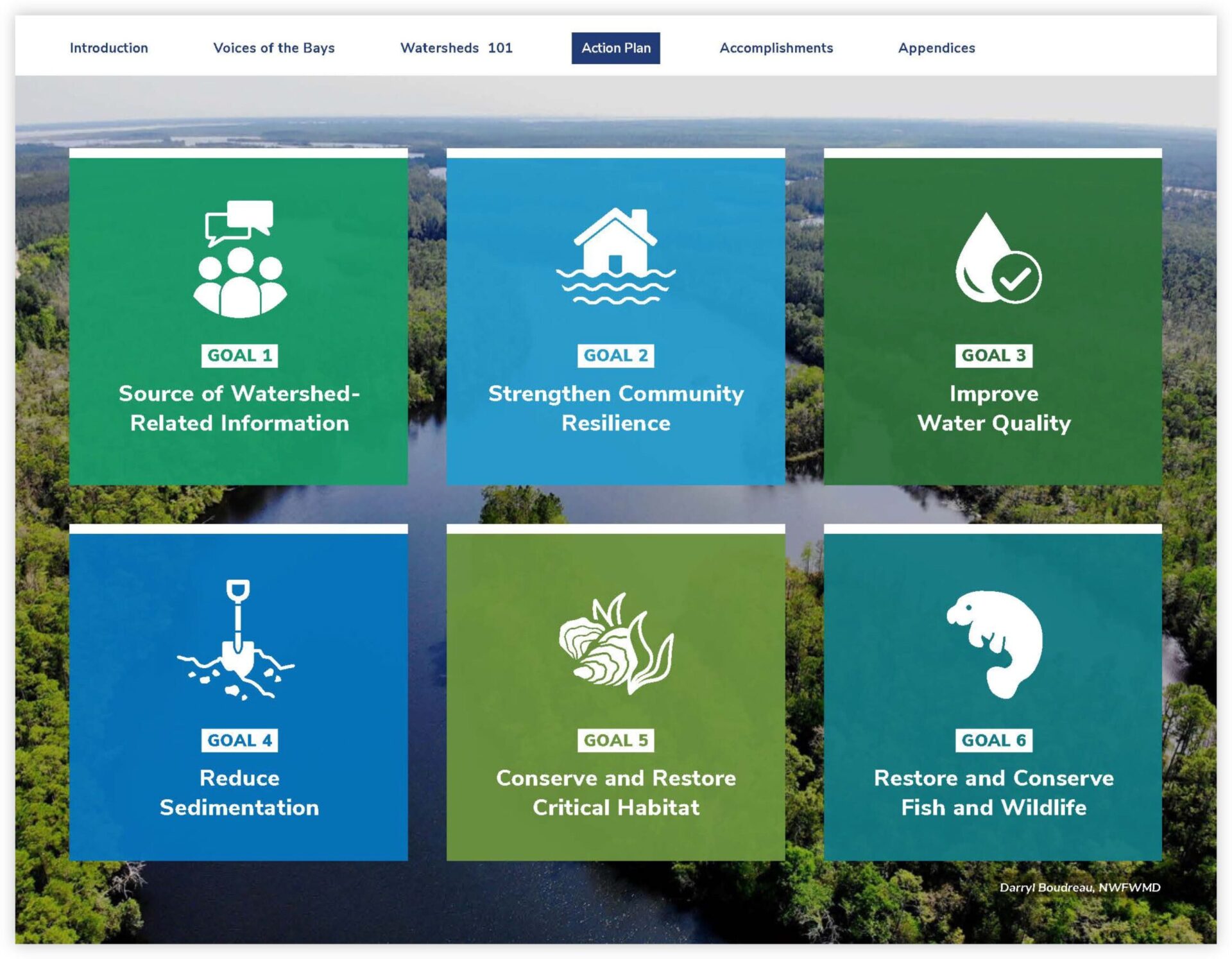
▲
Custom icons makes the 6 goals in the plan instantly recognizable.
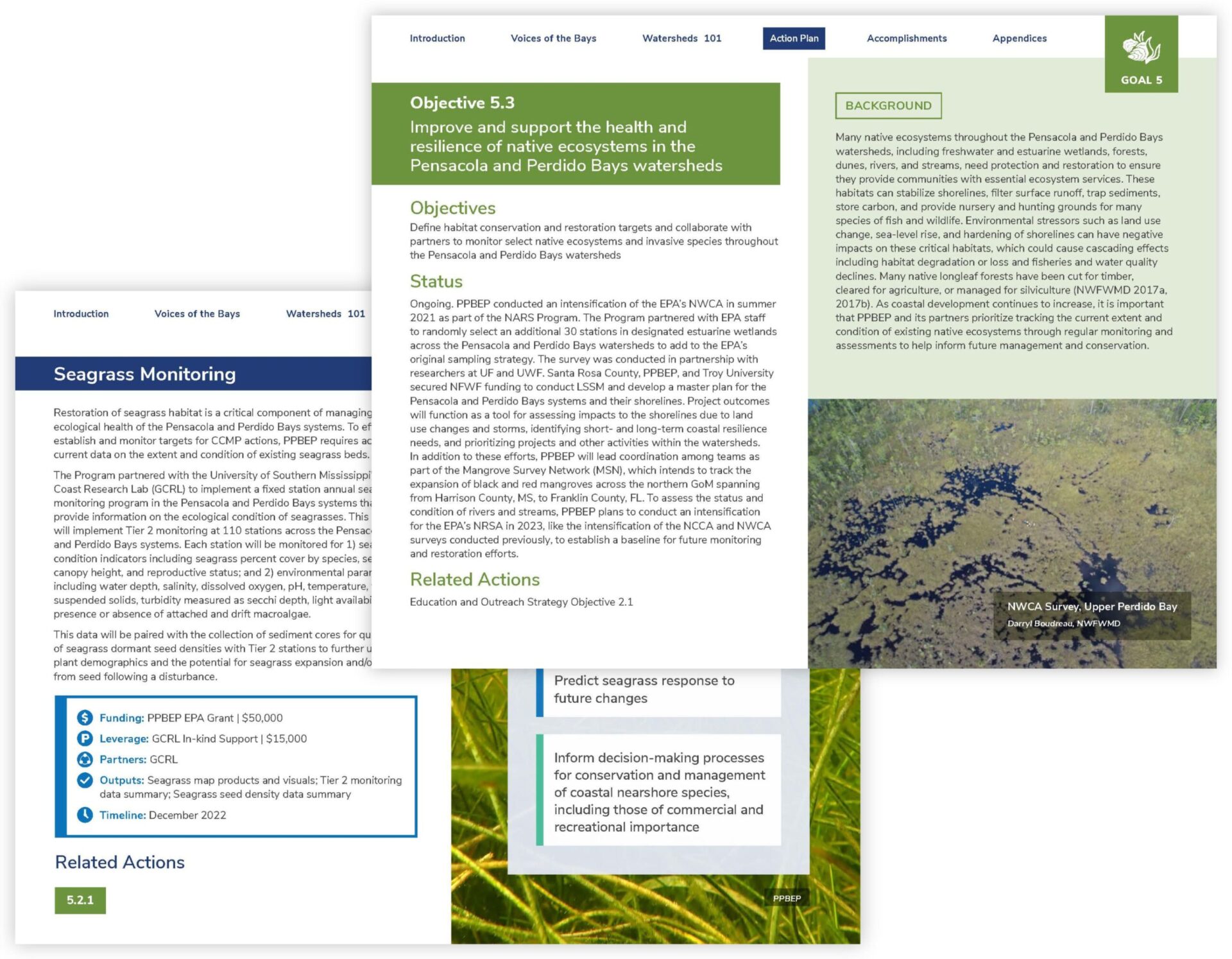
▲
Icons help the viewer navigate the Action Plan and tie examples in the Accomplishments section to the objective they correspond to.
The interactive PDF is compliant with accessibility standards.
This includes:
- Checking the PDF for correct tags and reading order
- Ensuring sufficient color contrast for text and graphics
- Adding alternative text for non-decorative graphics

Read more about Creating Accessible Design on our blog!
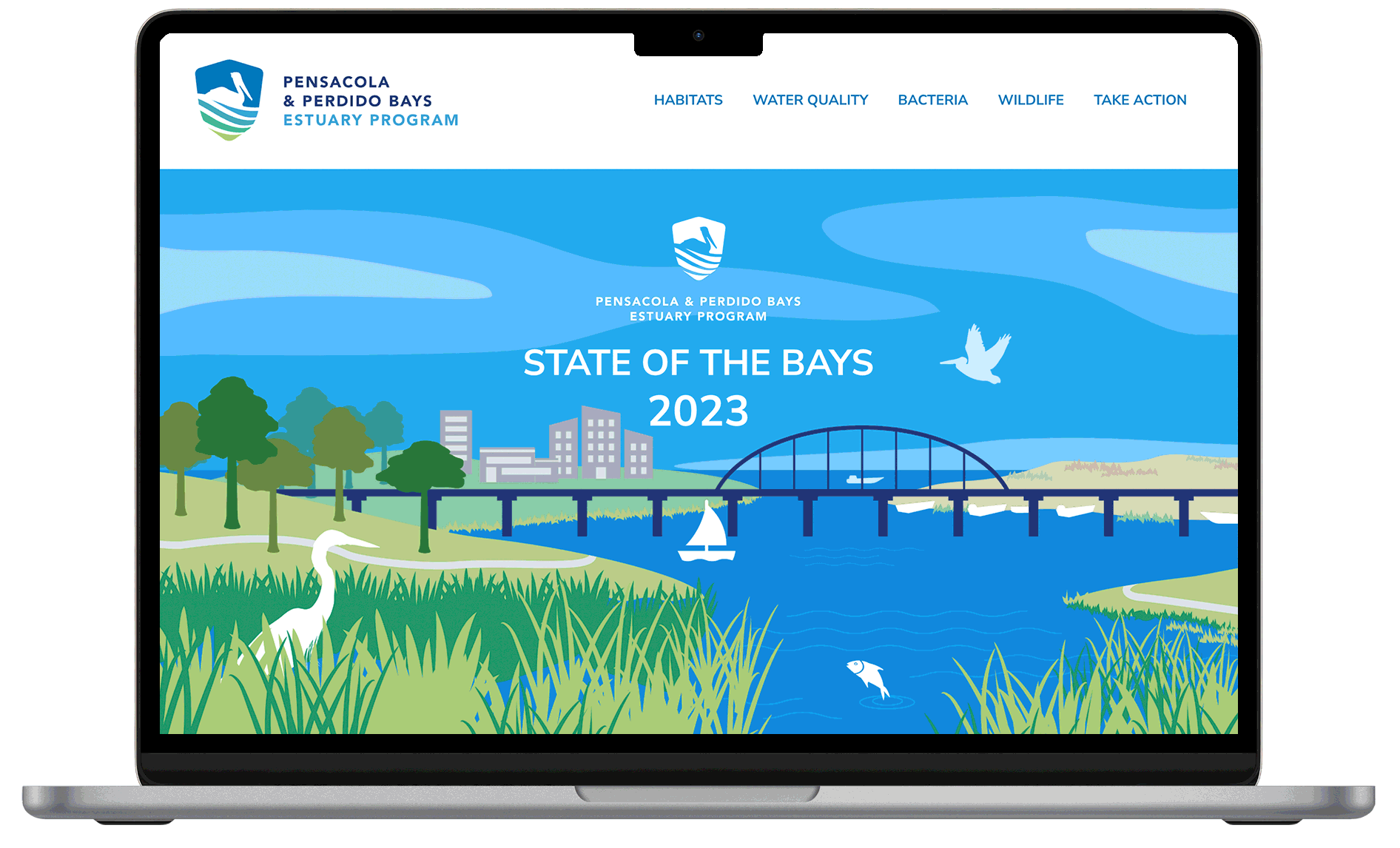
On the companion website, State of the Bays, text and graphics can be updated over time.
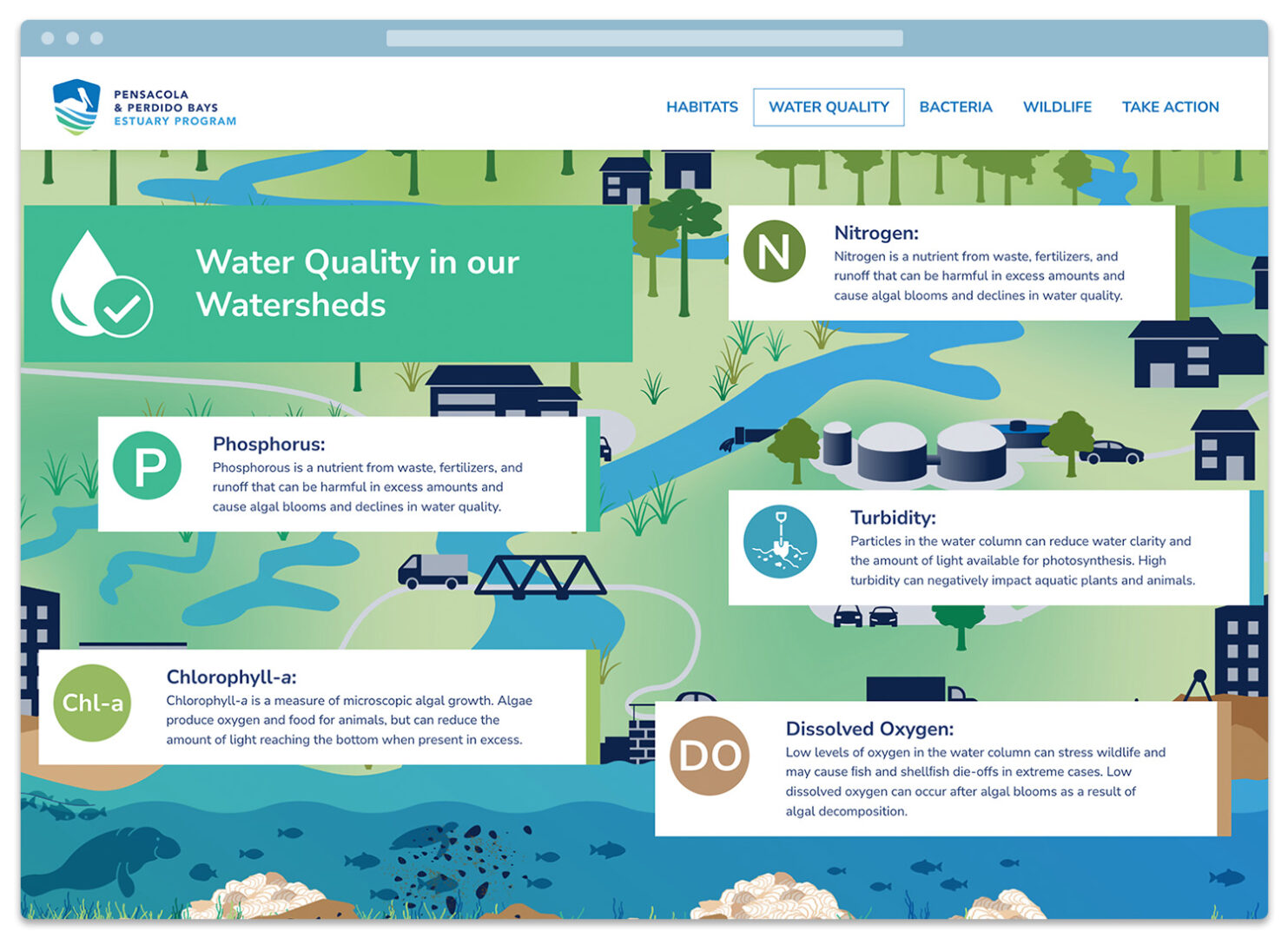
▲
Each page starts with an engaging infographic that provides an overview of the topic.
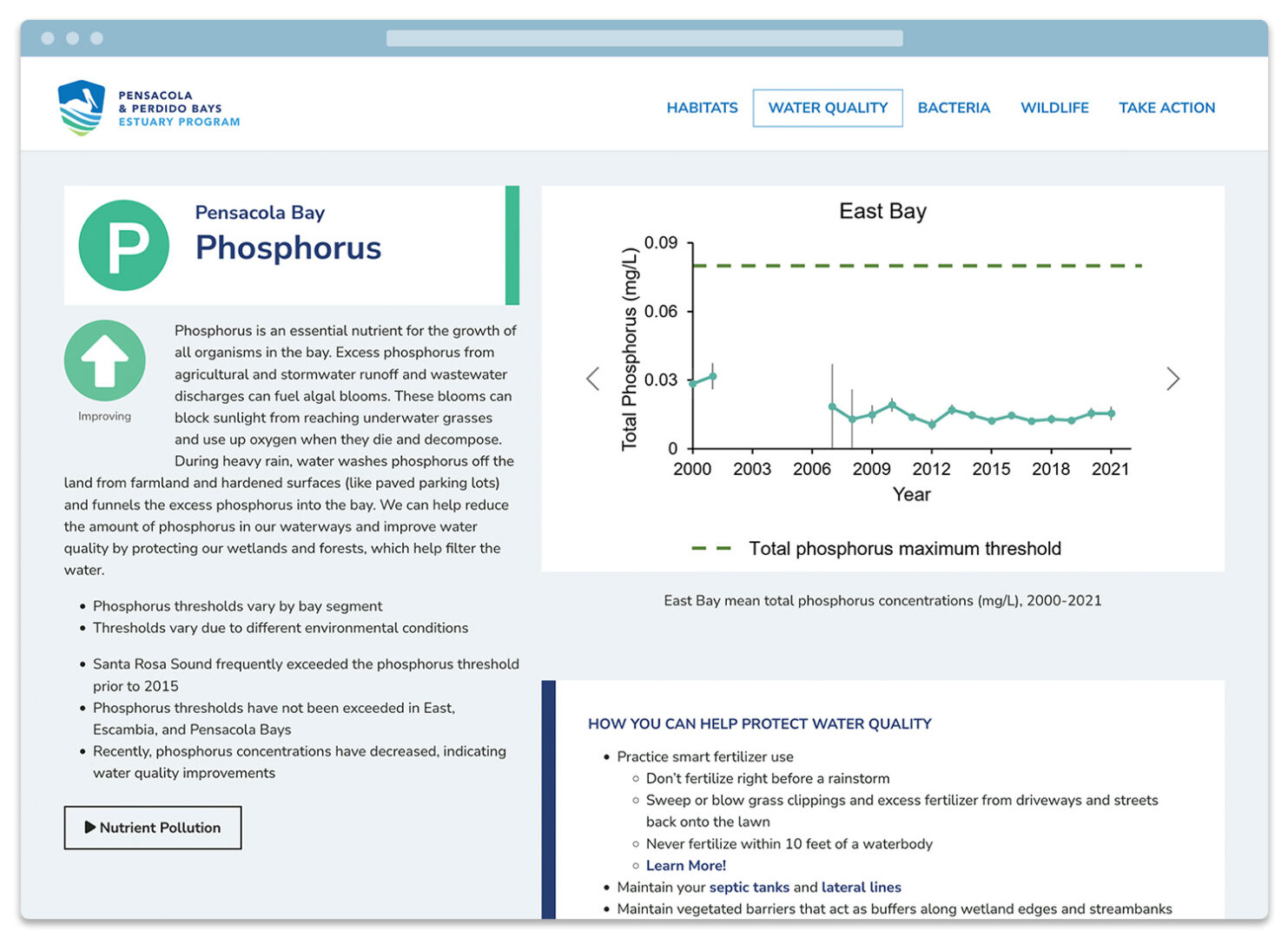
▲
Updatable text, graphs, and external links provide more details about each watershed.
"The entire team at Background Stories was very easy to work with. They took the job seriously, but still approached each project with fun energy, creativity, and openness."
Whitney Scheffel, Senior Scientist, Pensacola and Perdido Bays Estuary Program (PPBEP)
